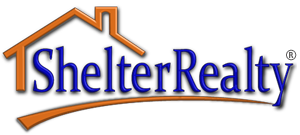LAS VEGAS, NV – With the recent economic upturn experienced by Las Vegas – fueled by an ongoing real estate boom, massive job growth as a result of an influx of new businesses and tourism increasing, and a more affordable cost of living, among other factors – the region has become quite attractive for location-first movers, with a recent study noting that Vegas currently claims the largest percentage of them in the nation. Location-first movers are defined as an individual or family that makes their selection in purchasing a home on the attractiveness of living in a specific area, sometimes before even securing a job there.
Apartment List noted in their study that a whopping 82 percent of movers selected Las Vegas based on numerous factors related to the lifestyle of the region, without even having secured a job before doing so. This is a huge number, and it far outpaces the number two location-first area in the U.S., Phoenix, which comes in at 69 percent.
These decisions are typically driven by a number of reasons related to living in Southern Nevada, including the general lower cost of living when compared to many other neighboring areas. A good example is the large amount of transplants from California, a state revered for its wealth and glamour, but infamous for its extreme cost of living; there has been a recent glut of movers from California to Vegas for the overall cheaper lifestyle, including the price of homes. While property values in Vegas have been steadily climbing due to incredible demand and lack of supply, they are still much lower, proportionally speaking, than in California; while local home values have risen 12.4 percent in the last 12 months, the median home price is still $230,800… this is in stark contrast to California, where the average price is $542,900, well over double. And although Las Vegas itself does have a sales tax of 8.15 percent, that number is nicely counteracted by the fact that Nevada has no state sales tax and very low property taxes.
Again, the reasons for this are clear- Vegas currently has an exploding job market that is offering a record number of placements for people both with and without college degrees; in addition, the revitalization that is taking place in the downtown area is not only offering additional employment opportunities, but it’s also offering an enticing number of entertainment options for local residents who are always on the lookout for something fun and exciting to do. And when they tire of the bright lights and big city, newcomers to Vegas can venture just out of town to experience the vast natural beauty that Nevada offers in abundance.
In addition, the rental market is also thriving and attracting similar numbers of location-first movers, at well over 60 percent; the closest competitor in this regard is San Antonio, with the rest of the field lagging well behind. And while again, demand and scarcity are in the process of driving up prices – currently, a one-bedroom apartment fetches an average of $910, with two bedrooms going for $1,130, with a year-over-year growth of 3.8 percent – but again, the overall lower cost of living, combined with a flourishing job market and numerous attractions and amenities afforded by life in Southern Nevada, have made Vegas THE place to call home these days.
Christopher Boyle is an expert investigative journalist for SEARCHEN NETWORKS® and reports for independent news and media organizations in the United States. Christopher keeps a keen-eye on what’s happening in the Vegas real estate market on behalf of Shelter Realty Property Management
